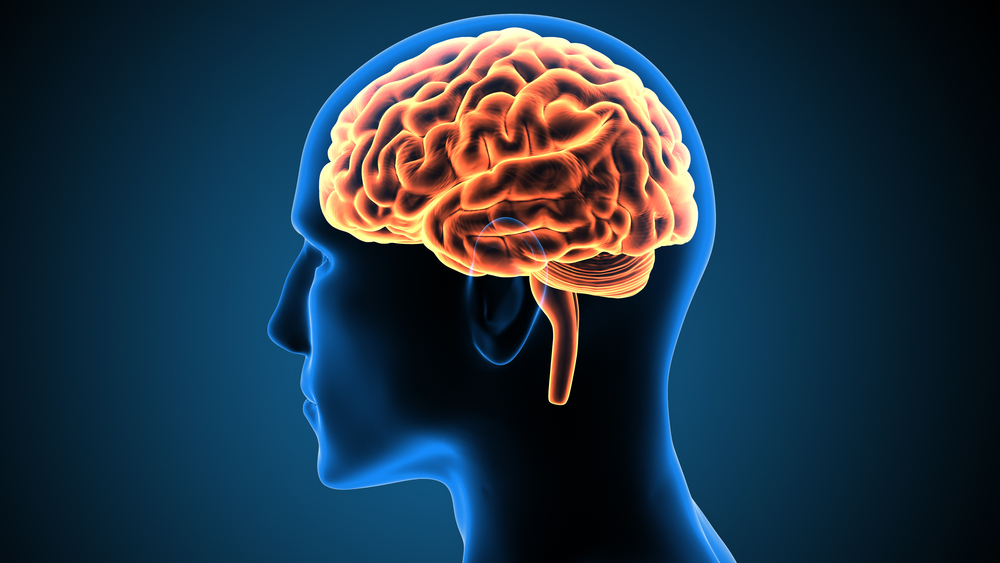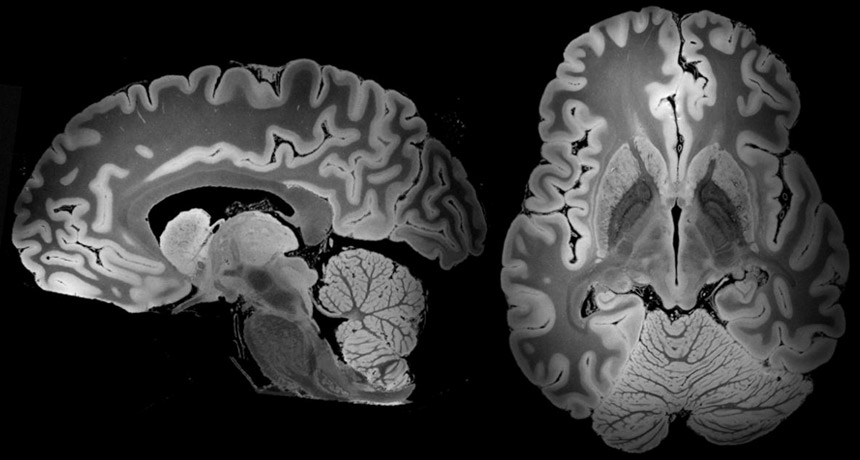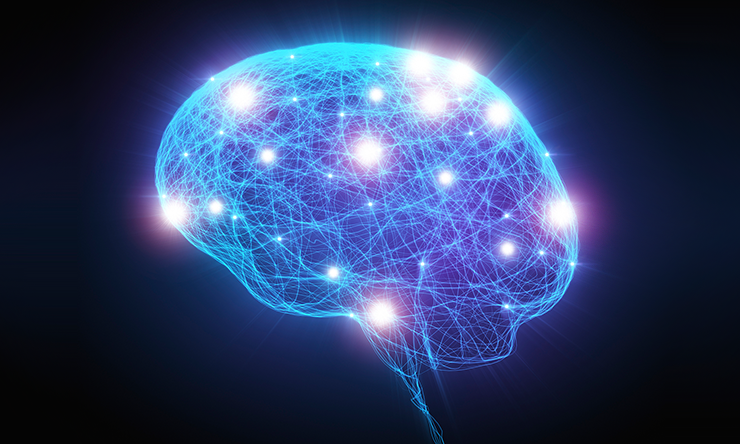Week 7 | Neuroscience + Art
In this week’s material, we learned about the relationship between neuroscience and art. I have personally always been fascinated by the brain and how incredibly complex the brain truly is. I used a number of different materials this week to really understand and dive deep into this topic. Some of the materials that really stood out to me and helped me understand this topic were the lectures, TED talks, and the presentation from Professor Daniel Jay.

[Figure 1.] Human brain
The first piece of material that really caught my interest was the TED talk about looking into our brains in real time. I thought it was so interesting hearing the speaker talk about MRIs and how they have allowed us to look into our brains and see what our brain really looks like. I thought it was so intriguing when the speaker showed how when someone is moving or doing something, then the MRI can show what part of the brain is being used. I also thought it was interesting when the speaker questions what things people would change about their lives if they could control their brains.

[Figure 2.] MRI of the human brain
The next TED talk that was really captivating to me was “3 Clues to Understanding Your Brain”. This speaker's topic was so intriguing and I really enjoy when he was explaining how every single part of our brain has a function, and if it is damaged then it will have significant effects. For example, he discussed how if a certain part of our brain is damaged then we can no longer recognize people's faces, not even our own. This really made me think about how complex our brains really are, and it made me want to learn more.

The last part of this week's material that really stood out to me was when Professor Daniel Jay discussed the relationship between neuroscience and art. I thought it was so amazing how he has spent so many years in both scientific research and the visual arts. I think that he is so incredibly talented and it is captivating to listen to him explain the brain and art.
Text Sources:
Connie Blaszczyk | Center for Art. “3Q: The Interface between Art and Neuroscience.” MIT
News | Massachusetts Institute of Technology, news.mit.edu/2019/3-questions-sarah-schwettmann-interface-between-art-and-neuroscience-0416. Accessed 17 May 2023.
deCharms, Christopher. “A Look inside the Brain in Real Time.” Christopher deCharms: A Look
inside the Brain in Real Time | TED Talk, www.ted.com/talks/christopher_decharms_a_look_inside_the_brain_in_real_time?language=en. Accessed 17 May 2023.
Leman, Jennifer. “The Brain in Images: Top Entries in the Art of Neuroscience.” Scientific
American, 29 July 2019, www.scientificamerican.com/article/the-brain-in-images-top-entries-in-the-art-of-neuroscience1/.
Pepperell, Robert. “Connecting Art and The Brain: An Artist’s Perspective on Visual
Indeterminacy.” Frontiers, 30 July 2011, www.frontiersin.org/articles/10.3389/fnhum.2011.00084/full.
Ramachandran, VS. “3 Clues to Understanding Your Brain.” VS Ramachandran: 3 Clues to
Understanding Your Brain | TED Talk, www.ted.com/talks/vs_ramachandran_3_clues_to_understanding_your_brain?language=en. Accessed 17 May 2023.
Image Sources:
[Figure 1.] “5 Facts That You Didn’t Know about the Human Brain: NeuroSpine Surgical Consultants.” NeuroSpine, 9 Jan. 2018, neurospinesurgical.com/2018/01/04/5-facts-didnt-know-human-brain/.
[Figure 2.] Sanders, Laura. “A 100-Hour MRI Scan Captured the Most Detailed Look yet at a Whole Human Brain.” Science News, 8 Nov. 2019, www.sciencenews.org/article/mri-scan-most-detailed-look-yet-whole-human-brain.
[Figure 3.] “Deep Neural Networks Uncover What Brains Likes to See.” Baylor College of Medicine, www.bcm.edu/news/deep-neural-networks-uncover-what-brains-likes-to-see. Accessed 17 May 2023.
Hi Bailey, MRI's are indeed so fascinating!! In my cognitive psychology class we looked at MRI scans specifically focusing on language and understanding (Broca's and Wernicke's area); it makes me so grateful that I am in a time where I can visually see these processes, technology is amazing. Visual representations like these show how dynamic the brain is and how many different areas work together to complete one task. It was great reading your blog!
ReplyDeleteHi Bailey! I appreciated your discussion about neuroscience and the complexities of the brain. i also find it fascinating that doctors can see how people are feeling through an MRI scan. In a way, the colors of the brain scan remind me of art. I wrote about the brainbow in my blog, which is also a way brains relate to art. This was a great reflection on this week's model.
ReplyDeleteHey Bailey! I also was fascinated about the MRI that pictured brains in real time, potentially leading to breakthroughs in self healing for emotional chronic pain. Great reflection on this weeks material and very easy to understand a basic overview of the intersection of neuroscience and art,.
ReplyDelete